Last Updated on October 27, 2024 by Ellen
This story starts on the beach, crosses my heart, and moves to a mountainside. The story is far from over. It’s an account of how we Earth Vagabonds – Tedly, and his mom Diane, and I – discovered the indigenous Ati people of Malay on Panay Island in the Philippines.
Meeting indigenous Ati people for the first time
Earlier this week, I fell in step with a group of people I’d never seen before on the beach. A few girls knew a few words of English. They asked what I was doing. Collecting shells, I told them, and offered a look inside my bag.
They started collecting shells as we walked, and placed them in my bag. I asked if they were at the beach to fish, and they said yes. They looked different from the average Filipino. Their skin was darker; some in the group had curly hair; their clothing was stained, old, some had holes. They carried nothing – no water, no bags, no snacks. They all shyly smiled at me.
When the group got to the spot to cast the net, I put down my shell bag and my day pack on the sand, kicked off my flip flops. Feet in the water, I grabbed the rope attached to the net, and was ready to help pull in fish. The girls giggled. To say they were surprised at my help would be an understatement.
We all worked to pull in the fishing net. I was wondering more about this group as we worked. Behind us, along the line of trees, the usual locals looked on, some with narrow glances. Those usual locals live on the beach, and I’ve also helped pull their nets in recent weeks.
I wondered why I had never seen this group, since I’d been living at the Hangout Beach Resort since March 16. I asked the girls to spell out their names slowly, so I could understand them.
A girl her named Gira kindly moved my bags and shoes down the beach as I helped the group close the half-circle of net along the shoreline. When she came back, I asked Gira where she lived. She pointed inland. I asked if she came from the mountains. She said yes.
I later found out I was helping with the Ati tribe – an indigenous group of people.
Who are the Ati?
The Ati tribe is a Negrito group, thought to have come to the Philippines from Bornea up to 30,000 years ago. The inhabited a few islands, most notably the now-famous tourist destination of Boracay.
As tourism grew, the Ati were pushed back. Today, they live on land designated to them from the government. From an American standpoint, this is similar to the concept of a native American reservation.
At the beach, I knew only the group was poor, probably hungry because the kids were thinner than most others, and they had to be thirsty – because I sure was.
The group was mostly women and children of various ages, a few young men, and a few older men. Their boat was much smaller than the boats usually used for this type of fishing. And their net had many rips and holes. Once the net was pulled in, I could see their catch was about a 3.5 on a scale to 10.
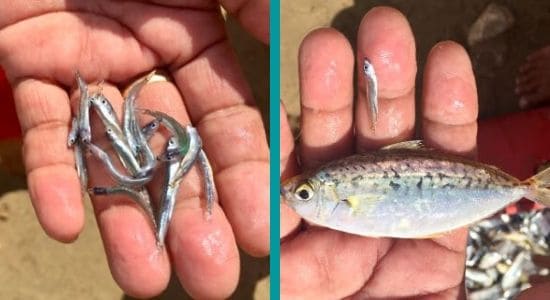
Water and food
I was parched and thinking about a cold bottle of water for myself. But what about these people, I thought. Should I buy a few bottles and bring them back to the beach?
I was lost in thought as I waited for the group to pack up their catch. The fish were typical and mostly small – sort of like sardines. And then, something caught my eye and put my heart in my dry throat.
Two of the younger men took a few small fish, turned from the group, and ate them. Raw. While alive.
I couldn’t believe it. Other locals never eat these fish raw – at least not that I’ve seen. Yet, here were people who were poorer than the locals (and many locals are really poor). These darker-skinned men were so hungry they had to eat raw, live fish because they couldn’t wait to cook it.
With a heavy heart masked by a smile, I waved goodbye to the group, and went off to buy an 18 peso (39 cents) bottle of cold water. These people don’t have 39 cents laying around to buy water. For the rest of the day, I thought about the group, and wondered what I might do for them.
Arranged meeting
Yolly, the owner of the Hangout, helped put us in touch with people to learn more about the Ati, and she helped arrange a meeting with the chief.
At our first meeting, we were invited inside the chief’s house. We talked, we listened. Three people in the room spoke English fluently. We began to learn a little more about the Ati.
Most Ati men are day laborers. Available work has been reduced because of the pandemic. Times are tough – tougher for people who have less. We offered a donation to help buy immediate needs, such as rice. The chief and the council accepted.
While food was needed, the most pressing need is water. Curious, we asked to see the water source situation they described. Plans were made for early the next morning to go on a hike to the spring – the long way so that we could see Ati land.
That hike happened this morning. And what a morning it was!
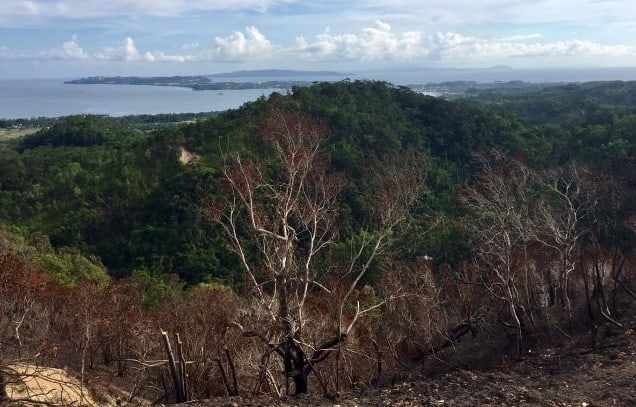
Morning hike with indigenous Ati people
I’m not especially fond of hiking in the hot sun, but this was an opportunity to spend time with indigenous people on their land, as their guest. Of course I would go!
Up, up, up, on trails that are made for walking. There was only one area that was steep with loose dirt, and that was from a fire. In fact, the fire we saw several weeks ago on the mountainside, was extremely close to Ati land.
It was a beautiful, though extremely hot, hike. Even starting off before 7:00 a.m. didn’t provide relief from the humidity. However, I enjoyed engaging a group of girls who escorted me with questions, getting them to speak to me in English, and explaining English phrases to them, like “middle-aged woman” as I huffed and puffed behind them while they ran up steep trails.
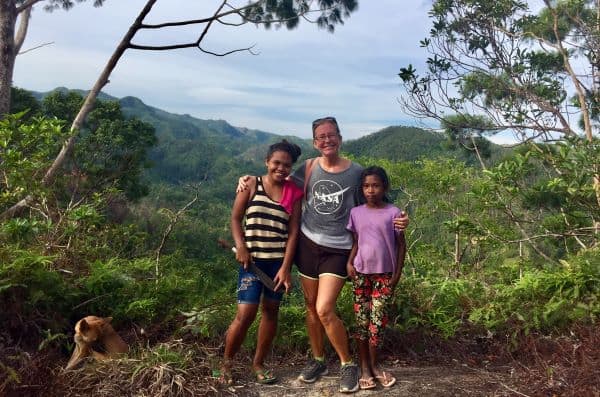
At one point, I was separated from Tedly and Mom Diane. The girls in my group guided me to the highest point on the Ati land. The view was magnificent. You can clearly see Boracay Island – as well as a 360 view of more mountains further inland.
To see this part of their land, we took the long way around to the spring where the Ati collect water. By the time we got to the spring, I had never been so thirsty in my life, and I’ve never been as sweaty from a hike.
Although we took the long way to the spring, even the ‘short’ way is not really short at all when you have to carry heavy water in this heat and humidity.
Needed projects
At the water site, we saw the chief and other men installing a new large plastic water tank. They poured concrete around the tank to force the spring into the tank.
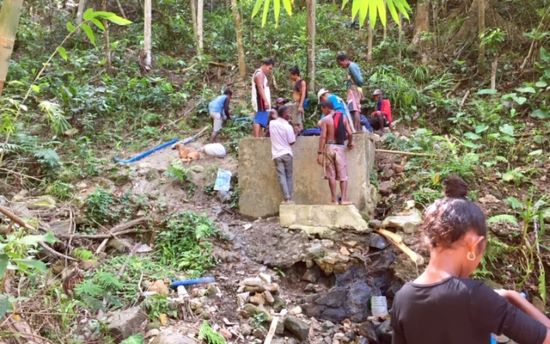
The tribe used to have two tanks at the spring, but one was destroyed in the Christmas typhoon. Also, a hen house was destroyed, along with hundreds of chickens.
The chief hopes to fix all of these things now that the pandemic restrictions have eased, we hope we can help. But there are some challenges. Funds are limited, and supplies are not down the road at Home Depot.
Good thing we like challenges! This is why this story has just begun.

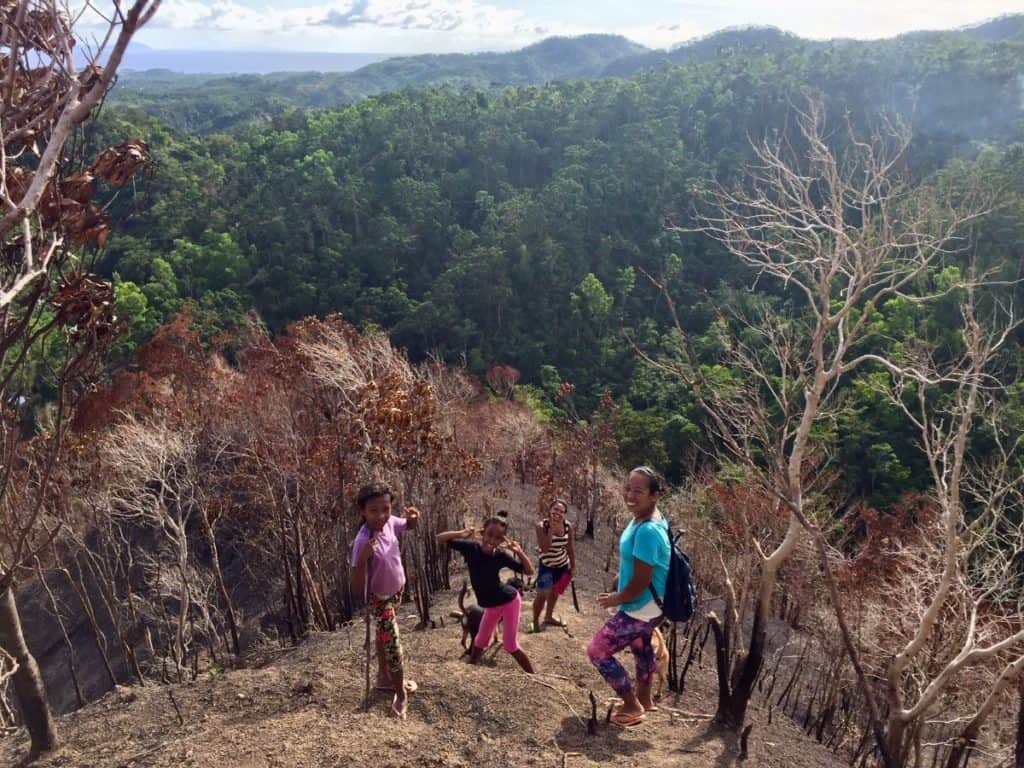
It’s like you are letting me see through your eyes, heart, and soul what it feels like to be in Panay and to be with our beloved people. Thank you.. But thank you is still insufficient for all you’ve done for them. The shells.. Those shells.. Those where the pearls come from.. The pearl.. The Pearl of the Orient Sea.. The Philippines.. My beloved homeland.. But it feels like for the past years, the Pearl is lost.. It is forgotten.. and the natives bear the suffering.
But this is giving me the assurance that the Pearl is about to show itself again and it will restore the true home of our natives, our ancestors..
Thank you so much, Theo and Ellen!!!!!